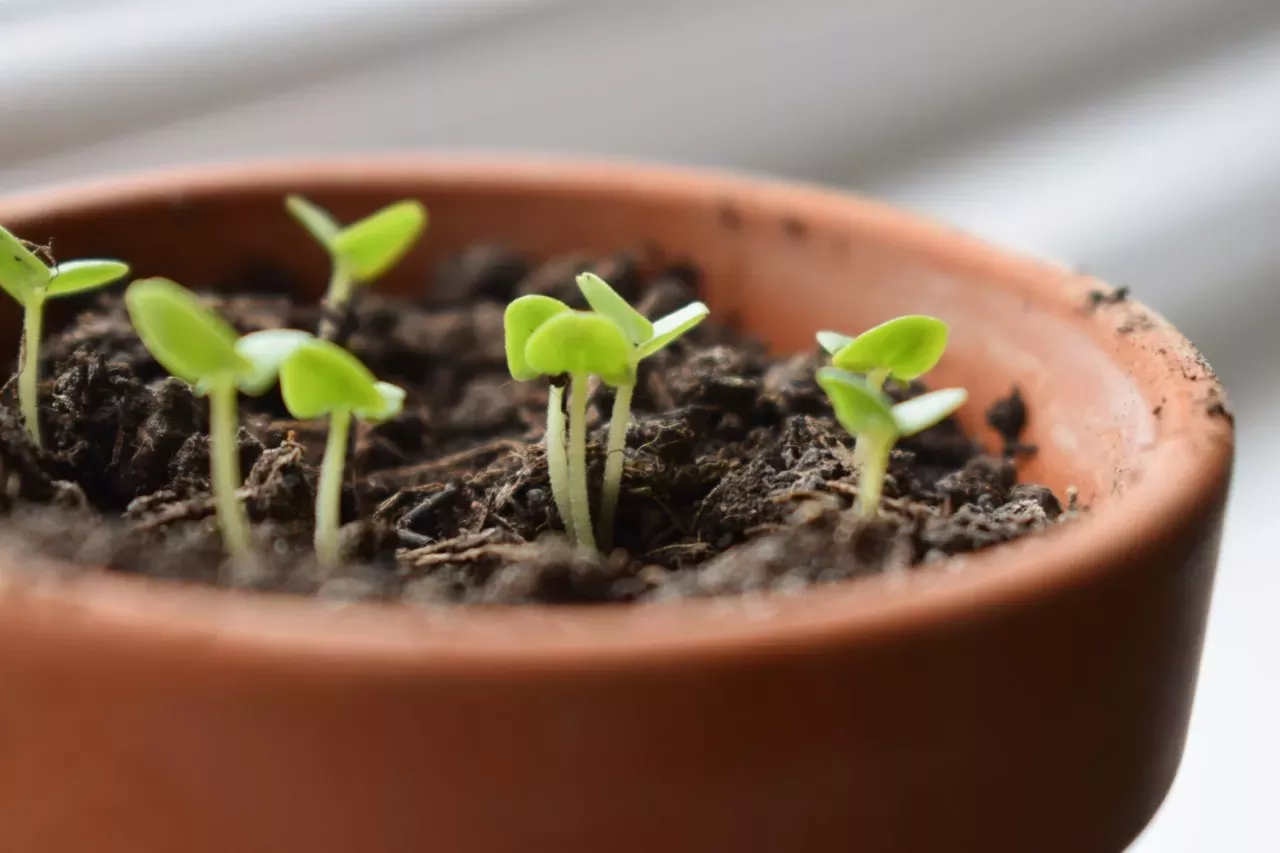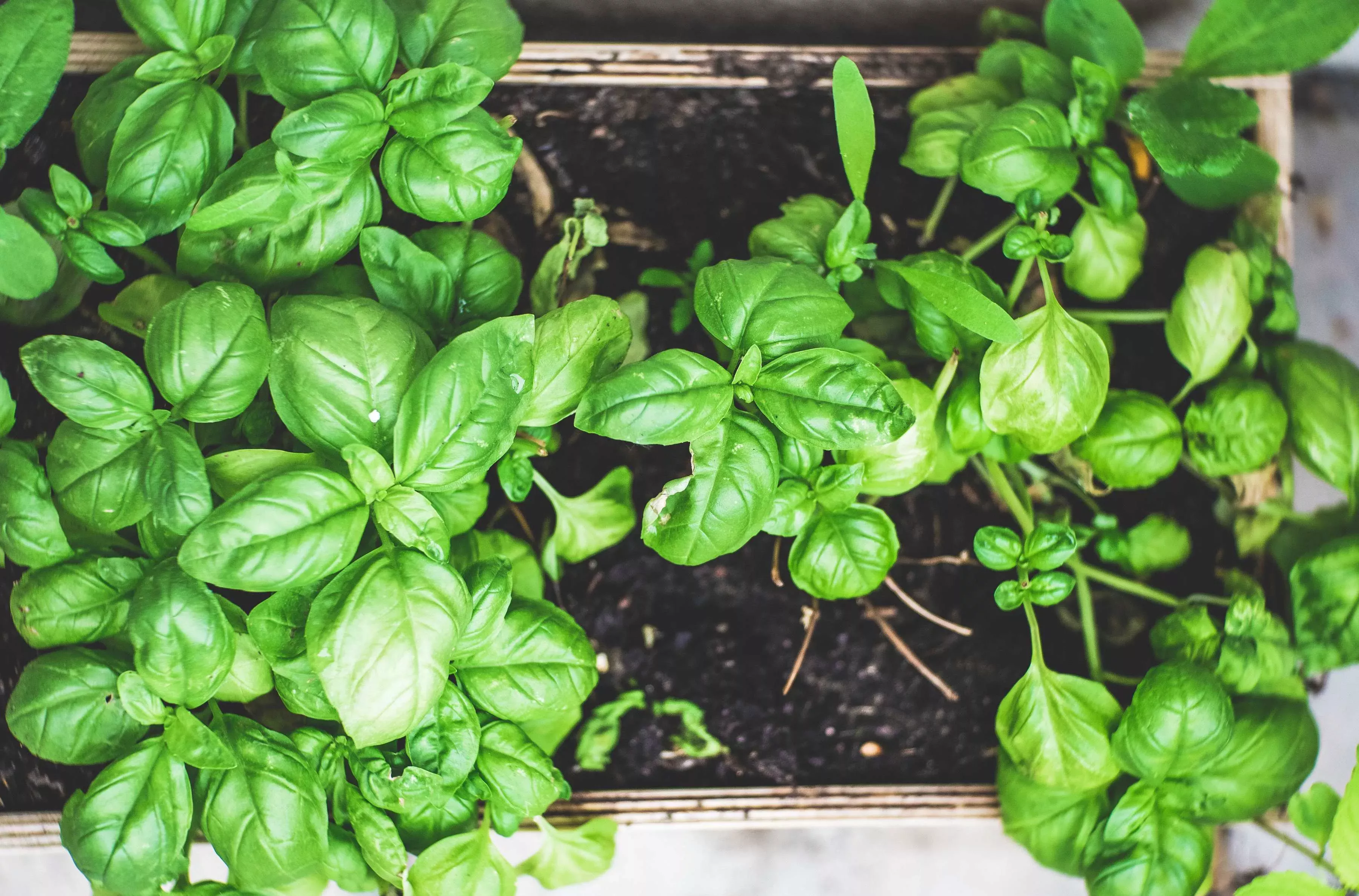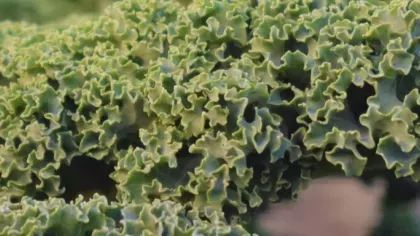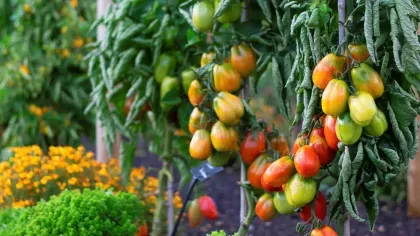19 July 2021
Brilliant basil
With roots in the world's tropical zones, this delicious herb can thrive just as well on your windowsill.

Most of us have come across this intensely fragrant herb. From a pizza topping to pesto sauce, basil is an incredibly popular ingredient.
Though often associated with Italian cooking, basil comes from tropical regions such as Africa and Asia, and arrived in the UK in the sixteenth century.
As a tender herb from hot climates, basil cannot withstand Britain’s cold winters outdoors, but will happily grow on a windowsill at any time of year.
This year in the Kitchen Garden, we have over 14 varieties of basil from different regions of the world.

Global flavours
The basil most of us grow is sweet basil, Ocimum basilicum, with its bright green, soft leaves. But there are many more types of basil to explore.
Within the species of sweet basil, we have several of the more fragrant cultivars such as ‘Cinnamon’, ‘Liquorice’, and ‘Mrs Burns’ Lemon’, which all taste like a mix of basil and their namesakes.


There are also purple leaved types such as ‘Shiraz’ which make a stunning addition to a green salad.
Thai basil or horapha is a sub-type of sweet basil that yields beautiful dark purple flowers, and an anise flavour to the leaves (which I personally do not like, but the chefs in the restaurants at Kew adore and turn it into some fantastic dishes such as stir fries!)

Surrounding the basil bed in the Kitchen Garden are what seem to be tiny box ball trees. In fact, these are Greek basil (Ocimum minimum), whose name is slightly misleading.
Greek basil actually originated in Chile and is a perennial plant in its native home, but sadly cannot withstand the frosts in our Kitchen Garden. It has a delicate sweet basil flavour, tiny leaves and white flowers, which makes it worth growing for looks alone.
At the very end of the bed is Ocimum tenuiflorum, more commonly known as Holy basil or Tulsi. It is native to India and used in Ayurvedic medicine to balance processes in the body. It is a sacred plant in Hinduism and is seen as a manifestation of the goddess Lakshmi.

Finally, at the centre of the bed is tree basil (Ocimum gratissimum), a native of Africa. As its name suggests, it can grow up to over 2 metres, with thick fuzzy leaves that taste of cloves.
Grow your own
Growing basil at home is incredibly easy. Simply sow a few seeds in compost and keep them on your windowsill until they have germinated.
The plants can be moved outside in the summer, which will give a more intense flavour to the herb but also creates tougher leaves. Alternatively, you can keep growing basil indoors for a more tender harvest.

If starting from seed seems a little daunting, you can buy pots of basil in the supermarket to split and pot up to make around five good-sized basil plants – the perfect sharing gift.
Another nifty trick is to cut a stem of basil and place it in a cup of water, where it will form roots and can be popped into compost.
The community allotment at Kew (near Lion Gate) has also been focusing on basil this year and has handed out hundreds of packets of seeds to local community groups.
If you are growing basil this year, please tag your photos @KewGardens on Instagram to join our growing community.


